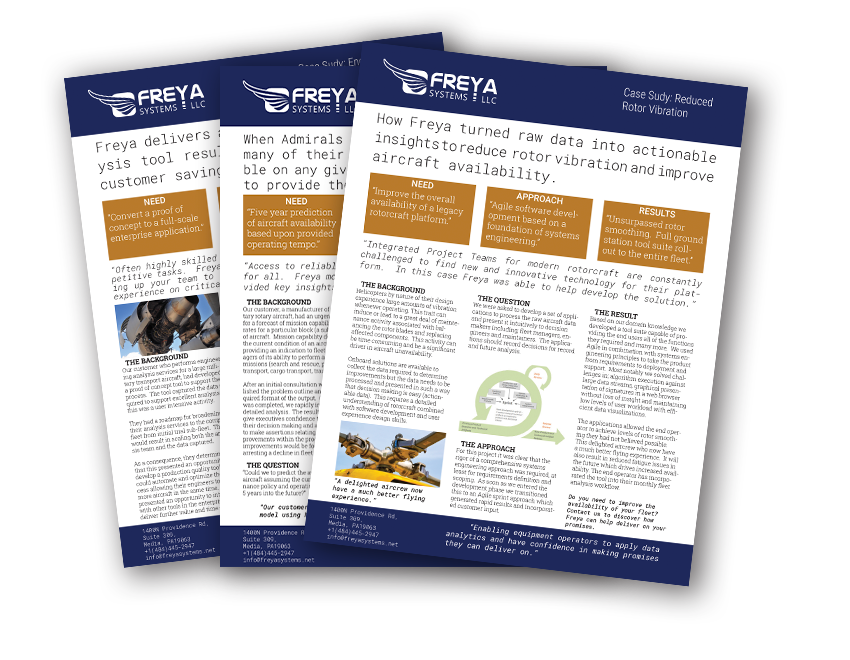
In order for a flight vehicle to be safe and reliable, regular aircraft structural maintenance needs to be performed to repair worn-out components.
Some components have a predictable wear rate and do well with a time-based or usage-based maintenance schedule, but many components are more random in their failure rates and a scheduled removal may not be a practical or cost-efficient maintenance expense.
Scheduled Maintenance vs. Condition-Based Maintenance
With scheduled aircraft maintenance, aircraft inspection schedules are carried out so that the vehicle is regularly inspected and any potential damages are repaired upon inspection. The goal is to keep the aircraft at or above a desired level of safety and reduce the probability of critical maintenance needed between inspections. For example, performing tactical aircraft maintenance for military aviation includes phase inspections and other part inspections that happen on either a regular flight hour basis or on a time-based schedule. Even with these regular inspections, there are times an aircraft’s mission capability rate is too low due to unscheduled maintenance.
With Condition-Based Maintenance (CBM), onboard sensors are continuously monitored and using thresholds or more advanced algorithms to alert potential issues on the aircraft, maintenance can be performed as often as it is needed.
The goal of using a CBM algorithm effectively is finding the sweet spot of alerting to a potential maintenance issue before it reaches a critical status and not alerting too often to where it would be more cost-effective to implement scheduled maintenance inspections instead.
Challenges in Developing CBM Maintenance Algorithms:
While an aircraft maintenance company balances the ideal timing for maintenance protocols, there are several challenges that make employing a CBM algorithm in practice difficult.
Challenge: Sensor data limitations on aircraft carriers
Sensors on the aircraft detect a vibration pattern that comes from different areas on the aircraft. Ideally, there would be a sensor for every possible direction near every component, but realistically there are limits to these aircraft condition monitoring equipment systems on the location and quantity of sensors on the aircraft. Certain components’ vibration patterns may be dampened before a sensor can detect any abnormal behavior.
The sensors themselves may also be limited in the range they can record, either due to the sensor hardware or due to the computer’s ability to record frequently enough. In digital signal processing, the sampling rate that is recorded needs to be higher than the Nyquist rate in order to be free of distortion known as aliasing. What is aliasing? Simply put, it is an effect that causes a signal’s frequency to become indistinguishable, which causes the error or distortion. For those components that vibrate at a higher frequency, the recorded sensor values would not be able to capture the true vibration pattern. The frequency of a vibrating object is defined as the number of completed cycles per second, measured in hertz. Although it can be daunting to successfully operate a vibrational CBM algorithm for antiquated aviation hardware, it is vital to understand the challenges and how to overcome them.
Data storage could also be an issue, as the computer may have limited storage space onboard the aircraft during a flight to record all the sensor data and may only write to disk under certain flight conditions. In theory, storing and processing all of the sensor data would benefit the development of a successful CBM algorithm.
Challenge: No “true positives” for a condition based monitoring algorithm
Wear is cumulative over time, and typically the only way to build a model is to look at failures of a component, or the error involved in making a certain measurement, and use the sensor data in the flights previous to the failure. However, sensor data has some standard error of measurement and there isn’t one exact time that points to maintenance needed on a component, so it can be difficult to pick out the signal from the noise of normal flights. In typical machine learning problems, the data can be set up so that you are training against a known output, e.g. failed vs. not failed, or percent wear. With CBM algorithms, the only data that is usually available are maintenance records when a part is removed. Most of the time there isn’t a way to quantify the amount of wear on the part when it is removed, or if there is a test, it may not be performed for every removal of that part. It is unknown how worn the part was during every flight that came before the removal, so the recorded vibration pattern is difficult to correlate with a known output.
Challenge: Safety assurance before the condition monitoring system detects critical degradation levels
In airline applications, failure of a component is not only costly, but can also compromise the safety of many. One of the benefits of a regular inspection schedule is that the amount of wear expected at each inspection is much lower than the amount of wear that would contribute to causes of component failure. When aircraft maintenance companies check often enough, it maintains the desired level of safety for flying the aircraft. For a CBM algorithm to be cost-effective, the cost of maintenance inspections completed by an aircraft maintenance engineer should be reduced while still achieving the same level of safety. Fewer inspections would reduce maintenance costs, but that would be balanced by the potential cost of repairing a failed component between inspections. The threshold of the CBM algorithm would need to be tuned so that the probability of a missed failure is low enough to offset the cost of failure between inspections, while still alerting less frequently than the original inspection schedule to save costs there. Sometimes there is no threshold value that can provide that balance, and the original inspection schedule remains the most cost-effective.
Balancing Costs to Implement CBM Algorithms
Overall, there is a trade-off between the high cost of frequent maintenance and a higher probability of critical component failure with infrequent maintenance, so a CBM algorithm needs to find the optimal frequency of maintenance. There are many technical and financial challenges to implementing a CBM algorithm, but if these can be overcome by ensuring reliable sensor data is recorded, providing data that quantifies failure levels of components when they are removed, and balancing costs of all maintenance actions, then CBM algorithms can help to improve aircraft safety and reliability.
Do you need support with your condition based maintenance needs? Gain the confidence you need to make data-informed decisions. Reach out and talk to a Freya Systems Data Scientist today.


